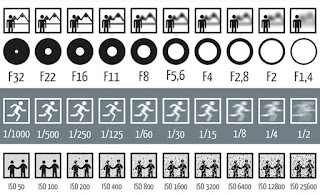Previously we saw how the 3 functions: Aperture, Shutter and ISO function when used independently. But this is never the case, when even we click a photo all 3 are playing their role thus when we clock a photo to get the desired effect we must consider all together.

Primary use of the 3 should for the following:

Primary use of the 3 should for the following:
- Apperture: Based on whether the object is close (portrait) or far (landscape). For portrait, use high aperture and for landscape, use low aperture.
- Shutter speed: Based on the movement of the object. If the object is moving fast for his speed. if the object is stationary or has minimalistic movement use a lower shutter speed.
- ISO: Based on the lighting around and how bright you want the picture to be. If there is enough lighting, use low ISO, if there is less lighting use high ISO. Similarly if you want a brighter photo use high ISO than what you are using currently.









